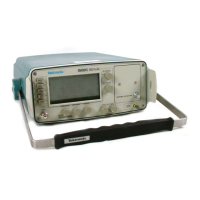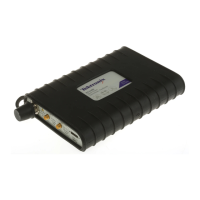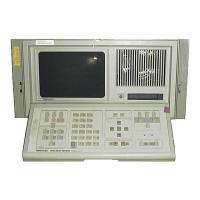Operating Instructions
1720/1721
2–19
Decoding.
To recover the hue information, phase demodulators are employed in
the vectorscope. The phase reference is the color subcarrier, which is regener-
ated by an oscillator in the instrument. The oscillator is locked in both phase and
frequency to the incoming color burst signal. The vectorscope displays the
relative phase and amplitude of the chrominance signal on polar coordinates. To
identify these coordinates, the vector graticule (see Figure 2-11 for NTSC and
Figure 2-12 for PAL) has points that correspond to the proper phase and
amplitude of the three primary colors and their complements, which are related
to the 180° burst vector for NTSC and the 135° burst vector for PAL. The
coordinates for the primary colors (red, blue, and green) and their complements
(cyan, yellow, and magenta), when the burst vector is at 225° for PAL, are
identified with lower case abbreviations.
Any errors in the color encoding, video tape recording, or transmission processes
which change these phase or amplitude relationships causes color errors on the
television receiver picture. The polar-coordinate-type of display, such as that
obtained on the 1720/1721, has proven to be the best method for portraying these
errors.
Functional Use of the Vector Graticule
The polar display permits measurements of hue in terms of the relative phase of
the chrominance signal with respect to the color burst. Relative amplitude of
chrominance to burst is expressed in terms of the displacement from center
(radial dimension of amplitude) towards the color point which corresponds to
75% (or 100%) amplitude for the color being measured.
On the 1720 graticule, each chrominance vector terminates in a system of
graticule targets in the form of two boxes (a small box inside a large box). See
Figure 2-13. The dimensions of the large boxes represent ±10° centered on the
exact chrominance phase, and ±20% of chrominance amplitude centered around
100% of standard amplitude. The dimensions of the smaller boxes represent
±2.5° and ±2.5 IRE.
Measurement of Color
Bars

